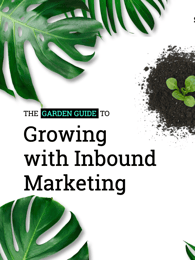
The Future of Social Media: Predictions from INBOUND 2022
September 15, 2022
By Ale Melara
So far, our INBOUND 22 recap blog posts have summarized this year's event’s sessions about NFTs, AI, data, and marketing trends. Today, we want to talk about a topic at the core of many marketers’ day-to-day lives: social media.
This article highlights key takeaways from the top sessions about social media and its future trends.
Note: Powerhouse Pass attendees have access to the INBOUND 2022 virtual event platform for one year from today to rewatch any session on demand.
Community Building 101: What Web3 Can Teach Us About the Next Evolution of Social
Presentation by:
Andrew Hong
CEO, Founder, Tobe Agency
Watch the on-demand recording of the session (note that you must have an INBOUND 2022 Powerhouse Pass to view).
Shifts happening in the digital world are the result of forces that are shaping normal practices that we’re used to. It’s getting harder to retain your customers through traditional digital channels. As marketers, we need to find new tools and channels to retain and delight customers.
The recent emergence of Web3 and NFT projects has shown that funneling your audience into micro-communities can be a more meaningful way to drive engagement with prospects on social media platforms. Learn hope these communities are shaped in platforms like Slack, Discord, and Facebook Groups.
Headwinds we’re seeing in traditional marketing channels.
How has social evolved over the past 10 years? Here are some of the headwinds that we see in traditional digital marketing channels.
Headwind #1: Social has been overrun with misinformation and disinformation.
There’s more pay-to-play to reach your audience. Organic reach has been statistically falling, and only 4-5 percent of your audience sees your post. Facebook is declining in users, and smaller platforms are starting to take market share over some of the big ones.
Do we still see social media as a reliable channel for the future of communication with our customers? For example, there’s a decrease in the average time people spend reading branded emails. If email is the only channel where we are reaching and engaging customers, is social really efficient?
Headwind #2: Privacy is reality.
One of the pillars of Twilio’s State of Customer Engagement Report 2022 is that we’re about to enter a cookieless world. Currently, 81 percent of companies rely on cookies for third-party tracking, and we’re starting to see Apple and Google opt people out of third-party tracking. Consumers are now more aware of and concerned about what is happening with their data, and privacy is a headwind.
Headwind #3: We need better tactics and tools to nurture and retain our customers.
We’re experiencing the early stage of a shift from product-led growth to community-led growth. For instance, HubSpot is an example of one of the best companies that built a community for their various personas.
What is Web3?
Key aspects of Web3 include:
- Digital products focused on decentralization
- A mindset toward building the next interaction of the internet
- Community-first orientation
- Micro-communities as the new social networks, not big tech
What is the difference between the Web2 vs. Web3 acquisition models?
Web2 had a top-down approach with a focus on creating the product first, then convincing people of its value and converting them to buyers or users.
The Web3 model means building a community first, then figuring out a product to build for that community. This involves engaging in Tweets or subreddits and generating referrals in these communities. Instead of collecting email lists and other customer data, companies are collecting users into a Discord server, for instance. Within this community, they’re engaging potential buyers, learning about them, and hosting events.
Other tactics Web3 brands use include PR for crypto and blockchain, and creating NFTs to provide gated access to the community and membership perks.
What are the steps to launching a community?
The main strategy that Web3 is using to attract and engage an audience: Building a community first, then a product. Most of the communities are related to people’s passions. So, where are the people of your community hanging out?
There are three steps to launching a community:
- Strategy
- Community charter
- Content strategy
- Technology
- Staffing and resourcing
- Launch
- Launch plan
- Content production
- Campaign production
- Pilot launch
- Optimize from the pilot launch
- Public launch
- Management
- Day-to-day management
- Content production
- Community events
- Community feedback
- Optimize content strategy
What other aspects should I consider, when it comes to being a Web3 company?
Consider the type of community that suits your industry. If you’re a B2B business, you probably want to create your community on Slack instead of Discord. Go to where your community is. Here are some common types of communities:
Get executive buy-in and set your expectations for ROI. Find other metrics to prove the community is valuable, such as engagement or the number of members. Just be aware that you’re not always going to get good, clean data from these metrics. In addition, have great community managers who can create special events and content for the community—people who can serve the function of party hosts.
Having a community doesn’t equal marketing. The community can provide growth, but it needs marketing. Also, inbound doesn’t go away! You should continue providing value through content. Make sure you are executing.
What are the best ways to get users to engage in your community at the start? Give people fun things to do in your community such as games, contests, and quizzes. Very exclusive content for your community that will allow for more engagement. Also, be sure you have active moderation of your community. People aren’t going to just start mingling with each other.
The traditional model of a top-down company-centric transactional exchange is fading because of the way web infrastructure has been built. The new way is decentralized and less transactional. Web2 isn’t going away, but Web3 is becoming a mindset. For your next product, look to your community for cues on how to build that product or service.
What’s Next: How to Navigate Marketing Around Search and Social Algorithms
Presentation by:
Neil Patel
NP Digital, CMO
Watch the on-demand recording of the session (note that you must have an INBOUND 2022 Powerhouse Pass to view).
Over the years, search engine algorithms have gotten harder and more unpredictable than ever, and social media platforms have reduced organic reach. To top things off, paid ads are continually getting more expensive. Neil Patel breaks down how you can beat the algorithm on search and social platforms, as well as how you can leverage unconventional marketing techniques to beat your competition.
Algorithms are getting tougher and tougher, but as marketers, we can still do well. Would you like to be shown every single post that all your friends are following? No, of course not. You want to make sure that the content shown to you is actually what you want to see.
You like algorithms—they do serve a purpose—but the issue is that there is really no transparency with them. Today, we are going to solve that.
What are tips for cracking the algorithm?
How do you navigate this dilemma? Here’s how to crack the algorithm:
Algorithms signal (AS) includes stuff that the platform is telling you, such as external and internal links. Here are some examples of algorithm signals from major social platforms:
Learnings include information that you keep learning from your own audience. These learnings can include various aspects, such as:
- What is the best content to connect with them?
- What is the best time to post?
- What exactly is it that your audience wants?
What People Can’t Ignore (WPCI) are the aspects of your brand that you have built to be self-reliant, that aren’t fully reliant on Google or any social platform. For instance:
- Deliver free tools
- Win awards to attract different audiences
- Harness your community by throwing events
What are the easiest ways to win the algorithm by platform?
YouTube
Within the first 24 hours of a video going live, you need to gain as many views as possible. The easiest way to win the algorithm is with push notifications. Utilize email, SMS, and social media posts promoting the video during those 24 hours.
LinkedIn focuses on comments more than anything else, so within the first four hours of your post going live, you need engaging comments. The easiest way to win the algorithm is to meet a lot of people, network with them, and encourage them to leave a comment on your posts—bonus if they’re thought-provoking comments!
TikTok
They want comments, and lot’s of them! Neil’s TikTok on podcasting video had 138,000 views. Why? Because someone left a comment on how podcasting is saturated and how he was wrong. The easiest way to win the algorithm is similar to your LinkedIn strategy: Encourage comments, answer them as much as you can, and give details when you answer questions.
Facebook wants you to create long-form content that keeps people on the platform. And ideally, that’s in the form of video. The easiest way to win the algorithm is one of two ways:
- Video content performs better than short-form content
- Videos that are high quality and longer than five minutes perform best
On Instagram, 80 percent of users prefer live content over reading a blog post. According to Growthoid, live video is expected to grow 15 times what it is in 2022. The easiest way to win the algorithm is by posting live videos at least twice a week, with good content!
Brand queries are big for Google. When more people search for your “brand” on Google, it shows you have loyalty and you are less likely to create false information or fake news. The easiest way to win the algorithm is by creating a solid brand by providing tools and a website.
Stay Tuned for More Highlights!
We hope these takeaways help you win over those communities you are trying to reach on a daily basis within your social media platforms. Stay tuned tomorrow, because we are discussing how emotions, empowerment, and productivity affect the workplace.

About the author
Ale Melara is a Sr. Content Marketing Manager based out of El Salvador, Central America. Ale is our very first LATAM employee. She's worked remotely for the past 5 years and she's had different roles in sales and marketing. In her free time, she works on creating educational videos around digital marketing for her "Inbound Nomad" social accounts where she promotes traveling the world while being a full-time marketer. Read more articles by Ale Melara.




















